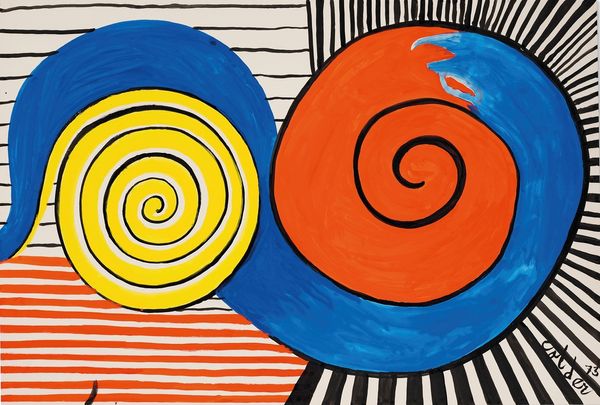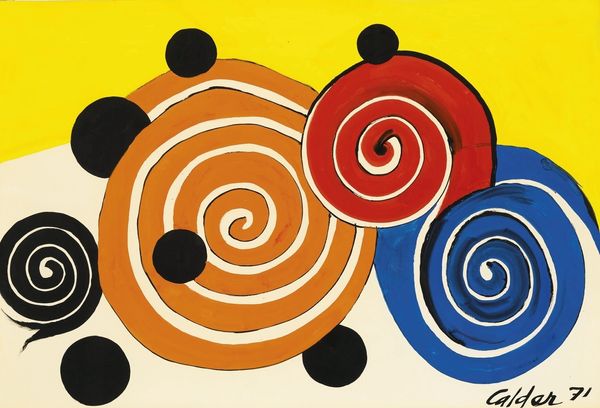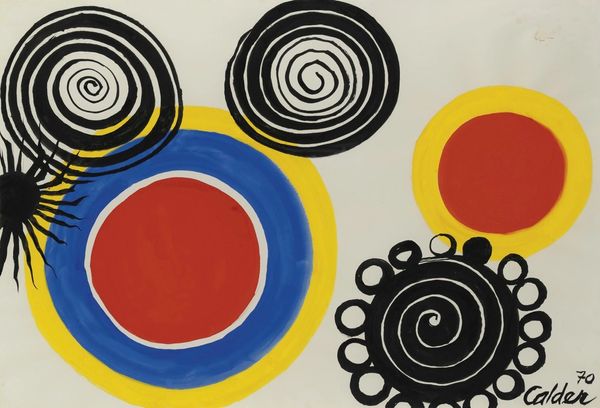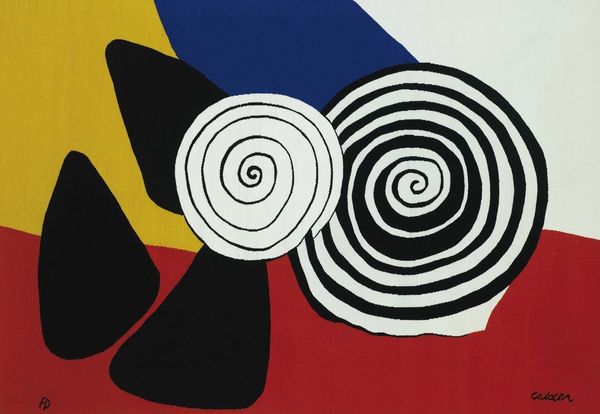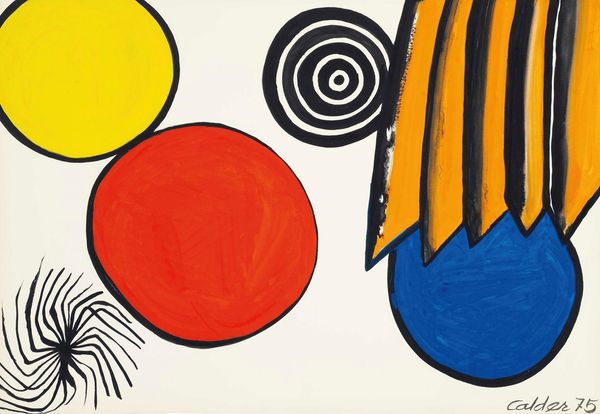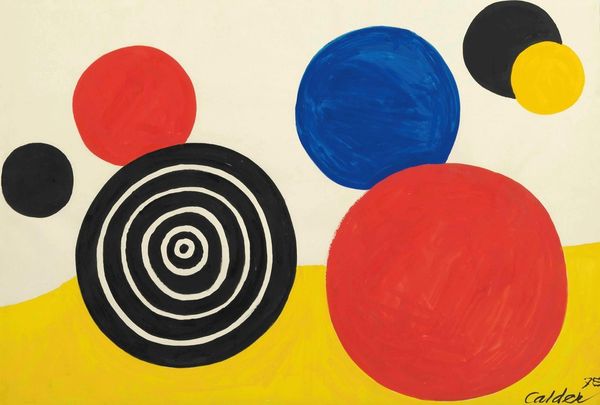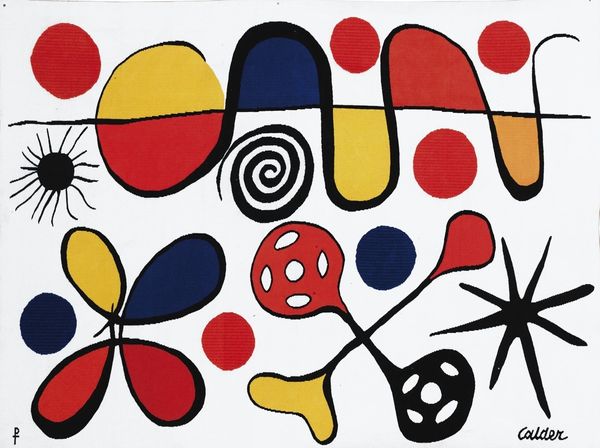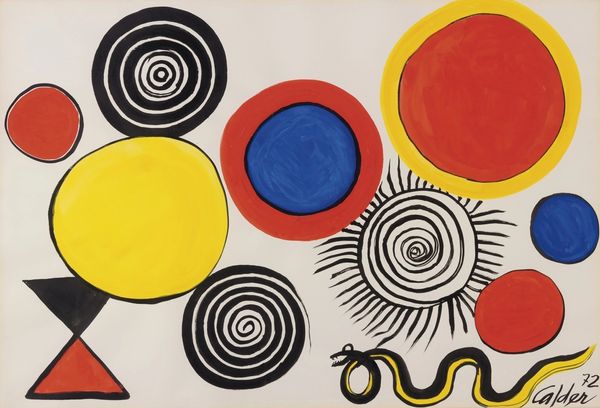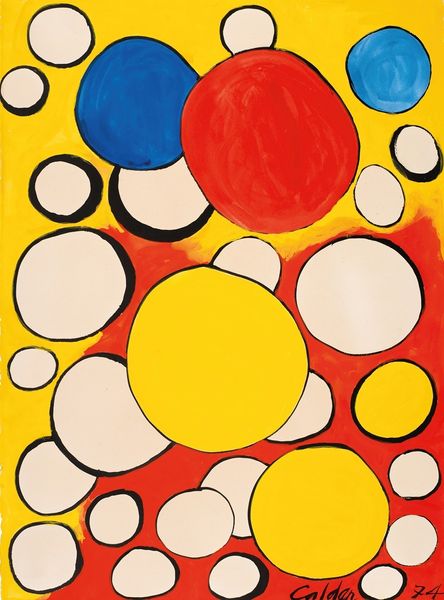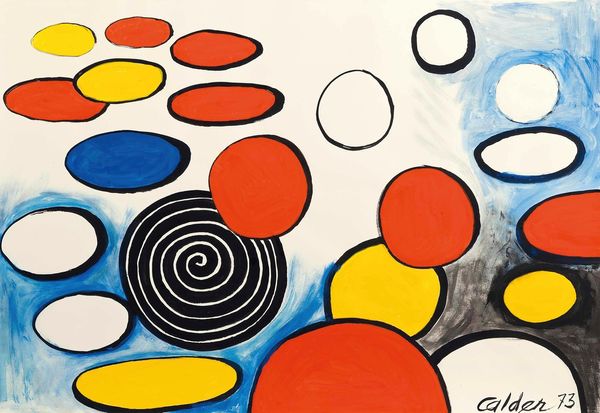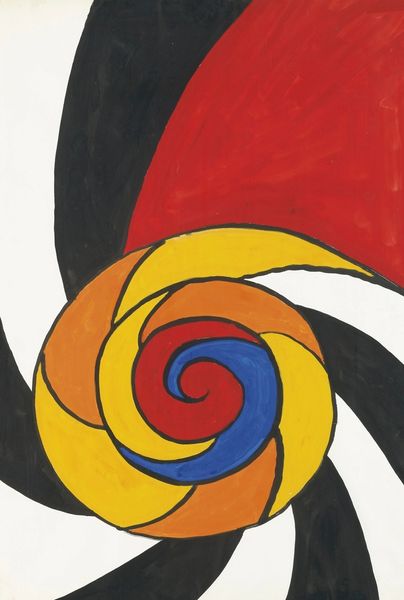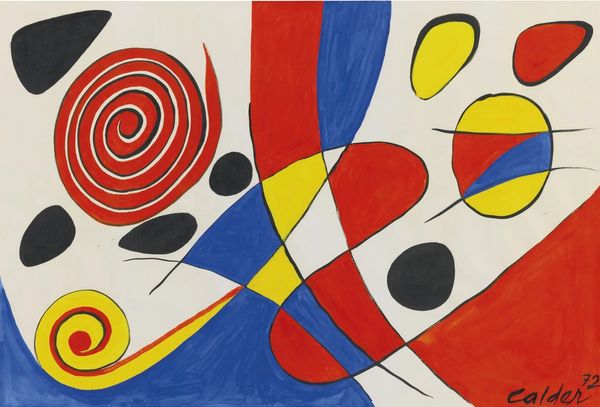
painting, acrylic-paint
#
painting
#
op art
#
pop art
#
acrylic-paint
#
abstract
#
form
#
abstract pattern
#
geometric
#
pop-art
#
line
#
psychedelic
#
modernism
#
hard-edge-painting
Copyright: Modern Artists: Artvee
Curator: This vibrant composition is Alexander Calder’s "Espirit Curieux," created in 1970. It's an acrylic on canvas, and it bursts with these swirling, hard-edged forms. Editor: It’s certainly striking. The colour palette is very direct, almost childlike in its simplicity, yet there’s an energy created by the spirals. Curator: Absolutely, and it reflects the broader cultural moment. Think about the Pop Art movement, Op Art, even the tail end of psychedelia – all feeding into this exploration of visual experience and bold colour. It moves beyond the canvas. Calder always challenged what art in the public sphere looks like. Editor: Indeed, and focusing just on the painting itself, look how those spirals interact. The lines that form them aren't perfect; there's an organic feel to their geometry. And how the background transitions from a solid white field to those regimented black lines gives it an unusual sense of depth. Curator: And remember that this comes quite late in Calder's career. He was already celebrated for his mobiles, so to see him revisiting painting in this style…it speaks to his constant experimentation with line and form and how line can generate movement, even on a flat surface. There’s some sense of his kinetic sculptures here. Editor: You’re right; the composition does vibrate slightly, a little disorienting. But the simple colours keep it from being chaotic. Curator: This simplicity makes it really accessible, engaging. The "curious spirit" he mentions could be any of ours; he makes a statement of color that's engaging across classes and ages. It feels very optimistic and inviting. Editor: Optimistic, yes, that's it exactly. Despite the limited color range and simplified forms, it's incredibly uplifting. Something about the contrast between hard lines and swirling forms makes it dynamic. Curator: It is fascinating to think of "Espirit Curieux" in terms of Calder’s contribution to postwar public art. Editor: I hadn’t considered its position in such a historical context, that shifts how I view the art!
Comments
No comments
Be the first to comment and join the conversation on the ultimate creative platform.
